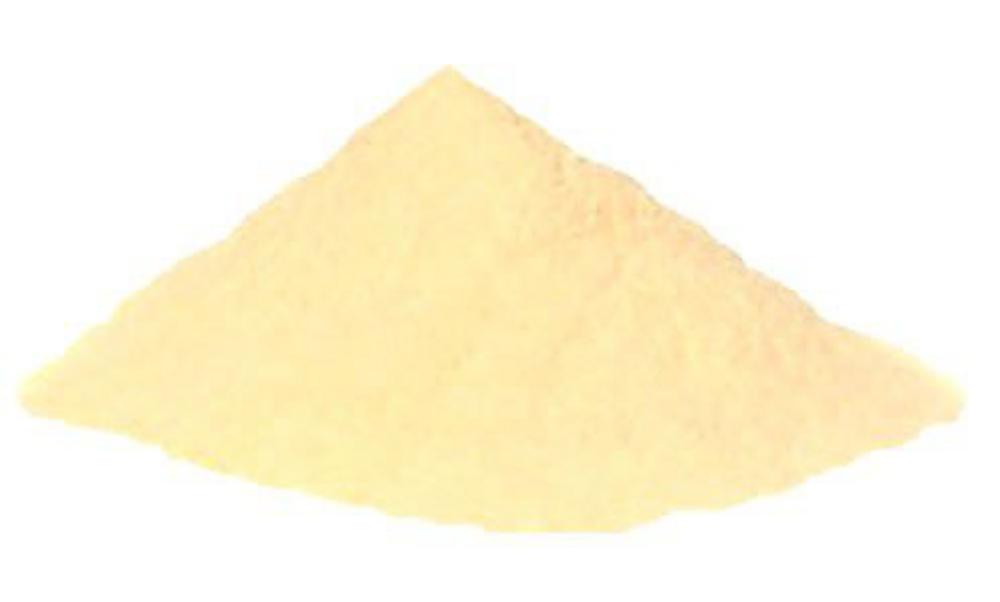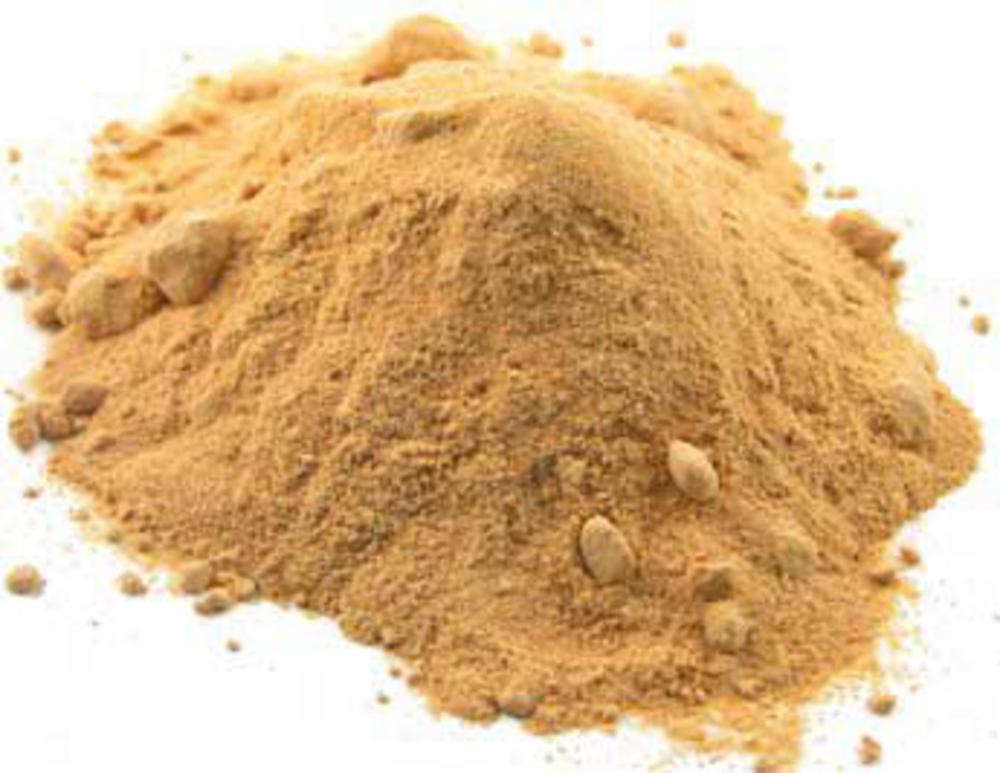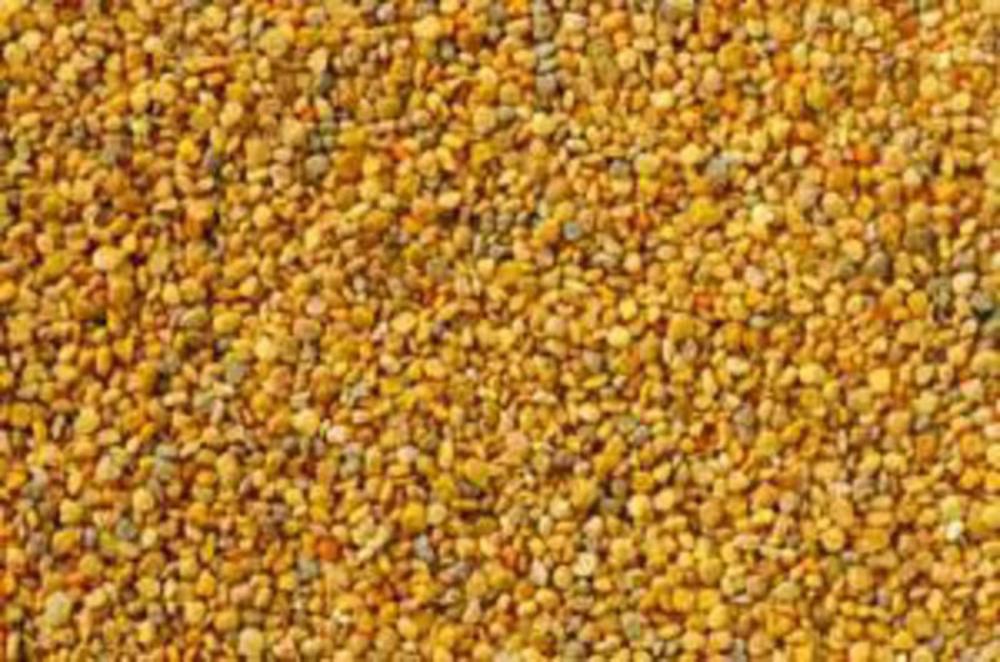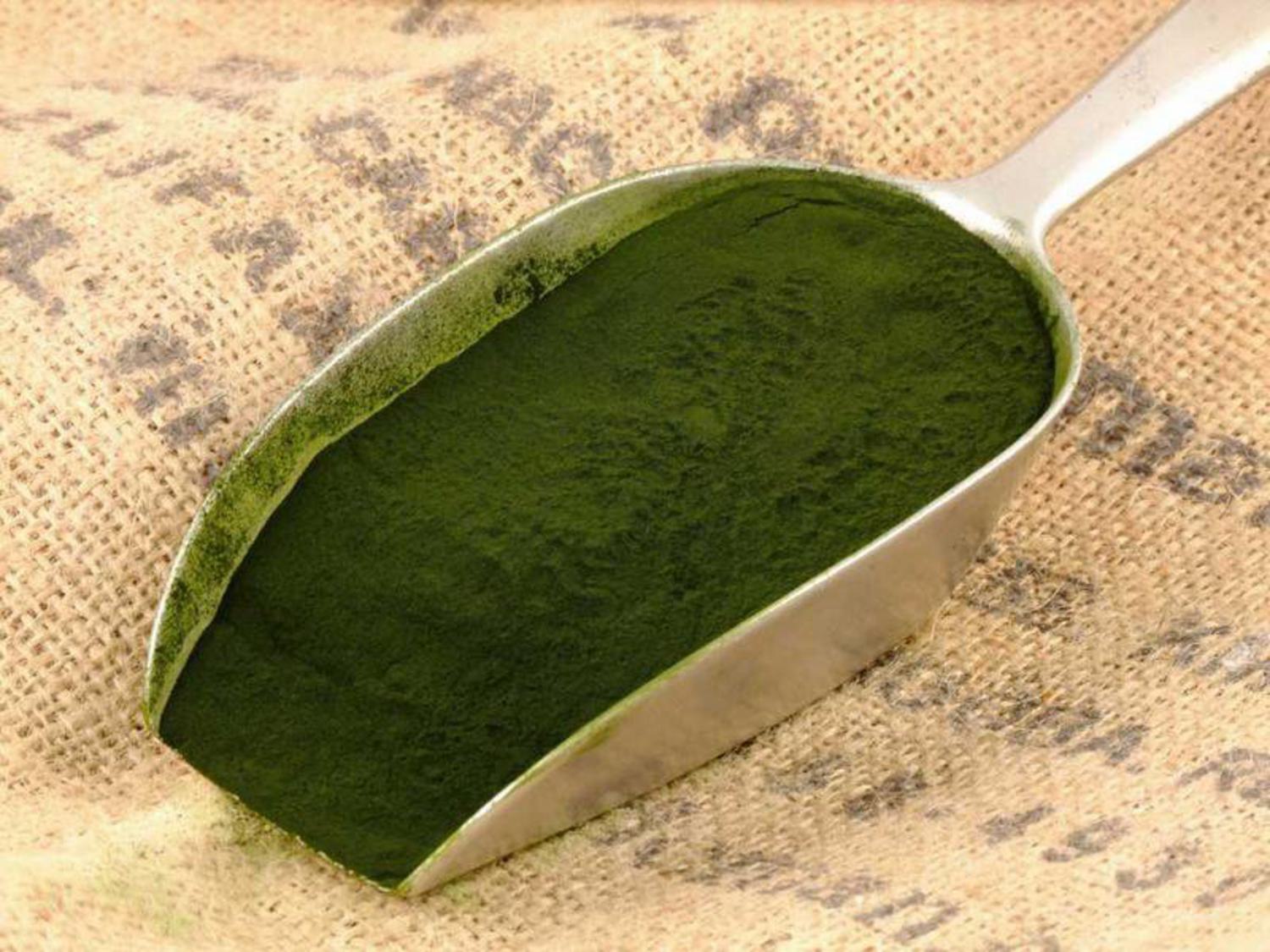Chia
What is it? A seed that has even more brain-boosting omega 3 oil than flaxseed/linseed, is higher in fibre than wheat bran (a favourite with people on the Dukan diet) and also contains a powerhouse of antioxidants. Chia seeds contain tryptophan from which serotonin (your brain's own natural antidepressant) is derived.
How to use it: Officially we can only sell it as a bread ingredient! The Advisory Committee on Novel Foods and Processes is poised to allow chia seeds in a wide variety of products including breakfast cereals and nut & seed mixes in the UK shortly.
Until then you can try Biona’s Chia and Flaxseed Bread, Chia and Flax Dippers from Raw Health, Raw Sprouted Chia Bread from Pura Vida and even Cold Pressed Chia Oil from Mychia. Or try adding a tablespoon to your favourite smoothie.
Baobab

What is it? An African fruit that is sustainably produced, then pulped and dried into a powder. It has more vitamin C than an orange, more calcium than milk and contains magnesium, iron, B vitamins and prebiotic fibres (which boost friendly gut bacteria).
How to use it: Mix a few teaspoonfuls into yoghurt, porridge or a smoothie. It's a fruit powder so it can be used in baking and ice-creams to add a flavoursome and healthy boost to recipes. It's also very popular simply added to water (some folk like to sweeten it with agave or similar), it makes an almost sherbet-like drink that is brilliant for vitamin C and iron intake.
Try Organic Burst Baobab supplement or one of Aduna's new range. You can find smoothie recipes here. Or try the new range of Wow!bab cereal bars with added baobab.
Kale

What is it? A bitter tasting cabbage, Kale is a nutritional standout in three basic areas; antioxidant and anti-inflammatory nutrients, much-needed macronutrients, and cancer-preventive nutrients called glucosinolates. In addition to conventional antioxidants like vitamin C, beta-carotene, and manganese, Kale also provides us with at least 45 different recently discovered flavonoids, including kaempferol and quercetin.
How to use it: Throw some raw kale leaves into salads or juicers. Or for a tasty snack try the Inspiral Kale Chips, dehydrated slowly to retain all the nutrients.
Kale Chips come in a range of flavours, Cacao and Cinnamon, Baobab and Onion, Wasabi and Wheatgrass, Raspberry and Maca and Cheesie Purple Corn. They’re all vegan, raw and incredibly moreish!
Yacon

What is it? A sweet-tasting South American root that's high in inulin, a sugar that the body can't absorb (good for those watching their weight!) Inulin is a prebiotic, so it can help with bloating. It's also high in potassium and antioxidants.
How to use it: Try adding the powdered root to smoothies or yoghurt, or use the Yacon Flour in cakes and cookie making for a sweet guilt free treat.
Bee Pollen

What is it? Ambrosia! That's the original name for Bee Pollen, it's a mass of pollen packed into granules by worker bees - it's the primary source of protein for a hive. It contains all of the essential amino acids, 18 vitamins, 11 enzymes and is a good source of protein.
How to use it: Simply sprinkle over cereal, muesli or porridge for a sweet, yet healthy energy boost. Most people use around a tablespoon a day, but build up to it slowly if you aren't used to it. It is not recommended for use by pregnant women, whilst breastfeeding or people with allergies to bees or pollen.
Try our Real Vitality Superfoods bee pollen which comes in a great range of sizes, from 25 grams up to 25kgs!
Spirulina
This
spirulina is organically cultivated on an island in the South China Sea. It is a single celled blue-green algae that gets its name from its spiral shape. This simple organism has been around for millions of years, but is now classed as a supernutrient because of its exceptional nutritional content.
Spirulina has a 64% protein content, one of the highest forms of digestible protein available. It provides a rich natural source of vitamin B12, C and E. Its mineral content includes high amounts of absorbable iron and magnesium.
The defining feature of spirulina is its broad range of phyto nutrients including beta carotene, chlorophyll and phycocyanin. Its outstanding nutritional profile also includes essential fatty acids; necessary fats that we cannot synthesise and must be obtained through our diet. It is also high in GLA fatty acid, lipids and the nucleic acids (RNA and DNA).
These components make spirulina a highly nutritious food. The phyto nutrients work to protect the body from free-radicals and encourage cell growth. Chlorophyll has a very similar structure to haemoglobin, helping our body to create red blood cells.
Research has shown that spirulina supports important parts of the immune system including bone marrow stem cells, white blood cells, and the spleen and thymus glands. It also shows that the number immune defence cells increase in number, become activated and provide more effective defence against viruses and bacteria.
The recommended dosage for adults is 1-2 teaspoons daily stirred into water, juice or smoothies.
Mesquite
The mesquite tree is indigenous to South America and the South Western USA, providing a staple food to the people living in the deserts. It has been used as a baking flour for over 2000 years, with its nutty, sweet flavour, it is often described as being similar to molasses and caramel.
Mesquite is a natural sweetener which does not affect insulin levels – perfect for those looking to balance blood sugar levels. The sugar in mesquite is in the form of fructose which does not require insulin for metabolism. Consequently, mesquite helps maintain a constant blood sugar level for a sustained period of time. Additionally, the flour is an excellent form of fibre – meeting almost a quarter of daily needs in just two tablespoons – which not only improves digestion but further benefits sugar metabolism. Mesquite also contains lysine as well as notable quantities of digestible protein (17%), calcium, magnesium, potassium, iron and zinc.
Use mesquite as a delicious ingredient in baking, smoothies or as an alternative to sugar in coffee and teas. In baking, it is usually used in combination with other flours with around 25-30% mesquite.
Be warned - this makes a large quantity of cookies!
Ingredients:
330g flour (use buckwheat for gluten-free)
160g mesquite flour
1 teaspoon baking powder
1 teaspoon bicarbonate of soda
¾ teaspoon fine sea salt
220g unsalted butter, at room temperature
400g natural cane sugar
3 large eggs, at room temperature
2 teaspoons vanilla extract
230g porridge oats
360g chocolate chips
Instructions:
You will need two greased or lined baking sheets. Preheat the oven to 190C or gas mark 5.
1. In a bowl, mix the flour, mesquite powder, baking powder, bicarbonate of soda and salt.
2. Cream the butter and sugar until smooth.
3. Add the eggs one at a time and then the vanilla extract.
4. Next, add the flour mixture a little at a time.
5. Mix in the oats and chocolate chips. The dough is quite stiff at this point and if you're not using a powerful standing electric mixer, you may wish to roll up your sleeves and use your hands.
6. Using about 2 tablespoons for each cookie, place your mixture on the baking sheets, with a good space between them.
7. Bake for 10-12 minutes, until just beginning to set.
Tip: to help keep chocolate chip cookies moist while they cool: When you pull the cookies out of the oven, take a spatula and tap the top of each cookie once, very lightly, to flatten any peaks and level them.
Chlorella
Chlorella is an algae that grows in fresh water and is single celled, only discovered in the late 19th century because of its microscopic size. It has been used as an energy-producing food ever since and is particularly popular in Asia.

Chlorella is mainly used to boost the immune system, reducing the chances of infection. Its high chlorophyll levels make it a good supplement for those with anaemia as chlorophyll aids the production of red blood cells. An abundance of chlorophyll also helps protect against the negative effects of ultra-violet radiation. Chlorella is perhaps best known for preventing the spread of cancerous cells and protecting against the adverse effects of radiotherapy treatment.
It provides most of the amino acids needed by the body (needed to build and repair cells in the body) including all of the essential amino acids and is also a good source of essential fatty acids (EFAs). The essential amino and fatty acids must be obtained through the diet as the human body cannot make them itself. It is high in vitamins and minerals including vitamins A, C, B1, B2, B5, B6, B12, E and K and the minerals include calcium, potassium, zinc, magnesium and phosphorus.
These high levels of vitamins, minerals and chlorophyll have been shown to protect against and help remove toxic chemicals, making chlorella a good supplement to take whilst detoxing. It is also high in fibre for good intestinal health and contains carotenoids which have a role in lowering cholesterol.
Chlorella can be taken in tablet and powder form, where it can be mixed into juices, shakes and smoothies. Individuals with a sensitive stomach should only take about ¼ teaspoon a day as it has a very high fibre content and this can shock some stomachs. The average person will probably need about ½ teaspoon per day, taken with food.
Maca root
Maca is indigenous to the mountains (Central Andes) of Peru, where it has been a highly reputed food since the time of the ancient Incas. It is a tuberous root vegetable resembling a turnip which can be processed into a flour-like powder.
It is known to increase libido, fertility, general energy and stamina. It has been called Peruvian Ginseng and Natural Viagra due to its powerful aphrodisiac effects for both men and women. It can also be used as a natural hormone balancer (pre-menstrual -correcting irregular menstruation- and menopausal- easing symptoms-) for women and can also be used to reduce insomnia and acne for both sexes.
As well as boosting energy and stamina, maca has high levels of many nutrients, particularly potassium and calcium. It also contains EFAs (essential fatty acids), necessary fats that we cannot synthesize, and must be obtained through our diet. They support the cardiovascular, reproductive, immune, and nervous systems and are essential in the manufacture and repair of cells membranes enabling them to obtain optimum nutrition and expel harmful waste products.
Traditionally, maca roots are taken in powdered form - a little like flour. An easy way to add maca to your diet is to bake with it. For instance, make muffins or bread and replace a couple of tablespoons of flour with maca. It is easy to mix into smoothies, juices or shakes for a healthy breakfast. Three or more grams of maca root per day is usually recommended.
Barley Grass
Barley grass has been cultivated since 7000BC, and is used as a food source in some parts of Asia. In the early 20th century, the juice made from barley grass was discovered to be a rich source of vitamins and minerals. This type is harvested at a maximum height of 9 inches and dried at low temperatures and then made into a powder.
Barley grass neutralises free-radicals, pesticides and preservatives, making it an ideal detox food. It has been found to be one of the most nutrionally balanced foods in nature along with the other cereal grasses in the same family.
Barley grass juice contains a rich assortment of vitamins, including a wide range of B vitamins, C, E and K - all vitamins have a greater absorption level when taken together than separately. Barley grass is rich in calcium, iron, copper, potassium, manganese and zinc, making it a great source of minerals.
It has been used to alleviate various conditions including arthritis, inflammation, asthma, anaemia, hypertension, diabetes, blood clots, obesity, impotence and kidney problems.
Barley grass also has very high living chlorophyll levels. Chlorophyll has been extensively studied and shown to aid rebuilding red blood cells, as it has a very similar structure to haemoglobin. For this reason, it can be beneficial to cardiovascular health as it reduces stress to the system by carrying more oxygen around the body. Chlorophyll also acts to detox the body from heavy metals and pollutants (such as cigarette smoke and heavy metal containing car fumes) ingested every day.
Barley grass can be taken as a juice, but it is more commonly taken in powder or tablet form. As a powder, it can be mixed into juices, shakes and smoothies or added to raw food recipes. Start with 1 teaspoon a day and gradually increase your dose to a tablespoon.
Wheatgrass
The powdered form of wheatgrass is only bettered slightly by growing it yourself. In either form it offers an abundance of nutritional benefits, many of which are essential to a full detox diet.
Wheatgrass is rich in chlorophyll, vitamins, minerals and all 8 essential amino acids. In fact, all essential vitamins, amino acids, and minerals needed to support human life are found within it; it is a complete food in itself. This means that the human body does not need any additional food source to sustain it. When grown in organic soil it carries 92 of the 102 minerals found in the soil, including an extremely high magnesium content which is needed to restore hormones.
The high chlorophyll content allows increased red blood cell production and high blood oxygenation. Other health benefits are include helping to detoxify the liver and blood (particularly of toxins and heavy metals) improving blood sugar disorders, reducing blood pressure, facilitating better digestion, improving skin conditions (eczema and psoriasis) and it is also helpful in enhancing overall immunity, especially beneficial during the winter months. The chlorophyll found in wheatgrass increases the enzyme levels in our bodies, aiding in cell rejuvenation and which could offer anti-cancer properties.
As a powder, wheatgrass can be mixed into water, juices, and smoothies or mixed into raw recipes. However, be careful which juices you mix it with, as wheatgrass is an alkaline substance you will need to avoid acidic juices such as orange and tomato.
To start with, the recommended dosage is 2 teaspoons, gradually increasing to a tablespoon a day.
Açai (ph. As-ee-eye)
Derived from the açai palm, native to South America, açai berries are one of the most nutritious native fruits of the Amazon.
Açai contains beneficial levels of vitamins B and C, key minerals, fibre, protein and EFAs (Essential Fatty Acids) and phytonutrients (those found in plants). It is also abundant in potassium and rich in copper, and unusually high in manganese, all essential for life.
The main phytonutrient content is anthocyanins - compounds that have a potent antioxidant activity, allowing for the neutralization of harmful free radicals and they also reduce cholesterol. Their anti-oxidant nature benefits key organs and reduces heart disease risk. Acaí contains significantly higher levels of anthocyanins than red wine and more than many other berries, including the superfood goji berries.
Açai berries are very rich in EFA’s, with roughly 80% of its composition being essential fatty acids. Each berry contains roughly 50% omega-6 and 30% omega-9. EFA’s help support cardiovascular health, joint health, skin health, brain health, maintaining healthy cholesterol levels, can help reduce inflammation, and can aid in fat loss.
It has also been shown to be beneficial in improving skins conditions (eczema and psoriasis) and reducing mild allergies.
We offer it in a freeze-dried form, using a highly technological process which ensures the product retains its natural freshness, taste and colour. Before consumption just add water to rehydrate or add directly to smoothies and juices. 1 teaspoon a day is enough to give you all the benefits of the açai berry, but there are no known side effects to taking more.